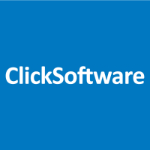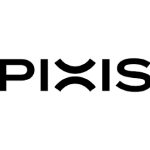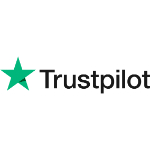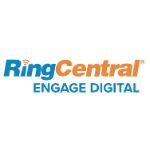List of Best Customer Experience Management Software
Showing 10 of 144 productsSalesforce CEM is a powerful software that offers efficient customer experience management solutions to enhance communication with your clients. Salesforce CEM software allows you to cater to your customers needs effectively and deliver top-notch ser...Read Salesforce CEM Reviews
Olark is a live chat software that helps businesses engage with their customers in real-time. With its user-friendly interface features, Olark makes it easy for companies to provide exceptional customer support and increase conversions. Say hello to...Read Olark Reviews
Pixis is a software designed to streamline business operations and take them to the next level. Digitally transform your organization with Pixis and discover a world of unparalleled efficiency and productivity. This game-changing software is built to...Read Pixis Reviews
Zoho SalesIQ provides your marketing, sales, and support teams with comprehensive digital engagement tools to connect with every site visitor throughout their entire customer journey. This all-in-one live chat and analytics platform enhances proactiv...Read Zoho SalesIQ Reviews
Improve your customer service with Freshdesks Online Customer Support and Help Desk software. Freshdesk offers all the necessary tools to provide exceptional customer service and ensure customer satisfaction...Read Freshdesk Reviews
Trustpilot is a platform that allows businesses to build trust and customer loyalty through authentic reviews. With millions of reviews from real customers, Trustpilot empowers businesses to improve their online reputation and gain valuable insights...Read Trustpilot Reviews
Zendesk is a customer service software that helps businesses of all sizes deliver exceptional support to their customers. Its user-friendly platform streamlines communication through various channels and provides powerful tools for managing tickets,...Read Zendesk Reviews
RingCentral Engage is a customer engagement platform designed to streamline and enhance communication for businesses of all sizes. With its intuitive features and seamless integration, RingCentral Engage helps companies connect with their customers i...Read RingCentral Engage Reviews
AskNicely is a customer feedback software that helps businesses gather, analyze, and act upon valuable insights from their customers. With easy-to-use tools and a seamless user experience, AskNicely empowers companies to improve customer satisfaction...Read AskNicely Reviews
Intercom is a solution for businesses looking to enhance their customer communication experience. With its innovative features and user-friendly interface, Intercom simplifies and streamlines communication between businesses and their customers. Say...Read Intercom Reviews
- What Is Customer Experience Management Software?
- Top Reasons Why Businesses Need Customer Experience Management Software?
- What Are the Top Key Features of Customer Experience Management Software?
- What Are the Top Benefits of Customer Experience Management Software?
- What Are the Steps to Choose the Right Customer Experience Management Software?
- What Are the Types of Customer Experience Management Software for Different Industries?
- What Are the Technology Trends for Best Customer Experience Management Software?
- What Are the Deployment Options for Customer Experience Management Software?
What Is Customer Experience Management Software?
Customer experience management software refers to a type of software that is utilized for the purpose of gathering customer feedback, conducting analysis on customer data, and enhancing customer care procedures. The software in question facilitates businesses in comprehending the sentiments of their customers towards the items and services they provide.
This enables them to make more informed decisions, ultimately resulting in enhanced customer experiences. The utilization of customer experience software enables the quantification of customer satisfaction pertaining to a certain product or service, the monitoring of client grievances, and the identification of deficiencies in customer care.
The customer experience management tools also possess the capability to discern customer preferences and trends, so enabling organizations to enhance the development of products and services that align more effectively with customer requirements.
Furthermore, the utilization of customer experience management software enables organizations to strategize, implement, and evaluate the efficacy of customer service initiatives, including loyalty programs and customer feedback surveys.
The collection and analysis of this data can be utilized to enhance organizations' comprehension of the customer experience, enabling them to develop more tailored experiences for their clientele.
This information can also be utilized to develop enhanced customer service plans, so enabling organizations to enhance customer happiness and augment their rates of client retention.
Top Reasons Why Businesses Need Customer Experience Management Software?
1. One way to enhance customer happiness is by implementing personalized strategies to tailor the client experience.
2. Enhancing Customer Experience through Optimization of Customer Interactions
3. The phenomenon of heightened customer loyalty and involvement has experienced a notable upsurge.
4. One way to improve customer service is by proactively anticipating the demands of customers. Enhanced understanding of client preferences to optimize customer targeting strategies.
5. The implementation of automated systems in customer experience management tools with the aim of enhancing operational efficiency.
7. The process of consolidating and harmonizing client data in order to generate comprehensive customer profiles.
8. Enhanced examination and monitoring of client contacts to facilitate informed decision-making.
9. One potential avenue for enhancing product development is through the utilization of enhanced customer feedback mechanisms and the subsequent analysis of collected data.
10. The customer experience software offers straightforward and user-friendly reporting functionalities that enable the quantification and assessment of client experience.
11. Enhanced facilitation of compliance management via customer service protocols.
12. Enhanced methods for monitoring customer interactions to ensure consistent communication.
13. Reliable consumer segmentation capabilities are essential for effectively targeting customer services.
14. The enhancement of client data accessibility in order to optimize response times.
15. Enhanced understanding of customer behavior and revenue patterns to optimize customer acquisition and retention efforts.
What Are the Top Key Features of Customer Experience Management Software?
1. Automated Surveys: Automated surveys facilitate the expeditious establishment and personalization of surveys by customers, hence enhancing operational effectiveness for customer support teams.
2. Analytics: Sophisticated customer experience management software solutions offers intuitive dashboards and analytical tools that transform consumer feedback into practical and implementable insights.
3. AI-Powered Response Understandings: Certain customer experience management tools have the capability to automate customer service responses to emails or chatbot enquiries by utilizing natural language processing techniques.
4. Data Capture: The consolidation of consumer feedback from many channels into a centralized platform is facilitated through the implementation of data collecting techniques.
5. Self-Service: Customers are able to efficiently locate the information they require through the utilization of self-service content.
6. Collaboration Features: The incorporation of team collaboration elements facilitates efficient and seamless communication among customer care representatives, enabling them to exchange valuable consumer insights and information in a prompt manner.
7. Text Mining: Text mining enables customer support teams to efficiently analyze vast quantities of client feedback and identify recurring trends and concerns.
8. Multi-Channel Support: The utilization of many integrated channels within customer care teams facilitates prompt and efficient responses to consumer enquiries through a unified platform.
9. Personalization: The use of automated personalized customer service has been shown to have a positive impact on customer wait times and customer satisfaction levels, since it facilitates a tailored and engaging client experience.
10. Cross-Channel Insights: By utilizing cross-channel data, customer service teams are able to conduct an analysis of consumer behavior across several channels and effectively segment customer populations, hence enhancing their comprehension of customer requirements.
What Are the Top Benefits of Customer Experience Management Software?
1. Improved tracking and analytics: Customer experience management software provides robust tracking features that allow firms to monitor customer behavior, gain insights into consumer wants and preferences, and find potential avenues for enhancement.
2. Enhanced customer engagement: The utilization of customer experience software enables firms to acquire a comprehensive perspective of customers and their behaviors, facilitating the implementation of customized and individualized strategies for customer interaction.
3. Improved customer satisfaction: The use of customer experience management software solutions enables firms to enhance overall customer happiness and loyalty by effectively comprehending and promptly addressing consumer needs and concerns.
4. Automated customer support: Customer experience management software facilitates the automation of customer service operations, so enabling firms to promptly address and resolve consumer inquiries.
5. Increased customer loyalty: Customer experience management tools plays a pivotal role in enhancing client loyalty and fostering repeat business by facilitating the creation of favorable customer experiences.
6. Improved customer retention: Customer experience management software solutions has the potential to mitigate customer churn and enhance customer retention by employing personalized customer care and customer journey mapping techniques.
7. Generate insights-driven decision-making: The customer experience management platform utilizes automated tracking and a diverse array of analytics tools to enable firms to obtain concrete insights into consumer behavior, hence facilitating informed decision-making.
What Are the Steps to Choose the Right Customer Experience Management Software?
1. Purpose and objectives: The task at hand involves identifying the precise customer service attributes and measurements that the customer experience management platform ought to offer.
2. Research suitable software options: Conduct an evaluation of customer experience management software solutions currently offered in the market and subsequently refine the selection to those that most effectively align with the specific requirements of your organization.
3. Determine budget restrictions: Please provide an estimation of the money required for the procurement and implementation of the software.
4. Assess capabilities: Examine and contrast the diverse array of features and capabilities offered by various customer experience management tools. It is imperative to carefully assess the unique requirements of one's organization and thereafter determine the solutions that most effectively align with these needs.
5. Consider a vendor's reputation: Select a vendor renowned for their exceptional customer care and support.
6. Test the software: Conduct tests on various customer experience software in order to ascertain their ability to deliver the required functionalities and performance.
7. Evaluate the results: Obtain input from users in order to ascertain the efficacy of the customer experience management software solutions.
8. Make the final choice: Based on the comprehensive evaluation conducted, it is recommended to make a final decision regarding the customer experience management system to be purchased and implemented.
What Are the Types of Customer Experience Management Software for Different Industries?
There are several types of Customer Experience Management (CEM) software available for different industries.
1. Customer Relationship Management (CRM) Software: The customer experience management system is employed for the purpose of effectively managing customer relationships through the systematic recording of customer data, sales leads, and customer interactions. Additionally, it has the capability to evaluate customer behavior in order to enhance comprehension of consumer requirements and formulate plans for delivering improved service.
2. Knowledge Base Software: The customer experience management system aids firms in effectively managing and facilitating customer experience by offering a structured database of solutions to frequently encountered customer issues. Customers are able to rapidly locate solutions to their inquiries and ascertain that they are receiving optimal assistance.
3. Voice Of Customer (VOC) Software: This particular category of client Experience Management (CEM) software facilitates the acquisition of client feedback and the evaluation of customer satisfaction levels within enterprises. This analysis offers significant perspectives on customer grievances and experiences, which in turn aid organizations in enhancing their offerings and services.
4. Customer Feedback Management Software: The customer experience management system facilitates the management of consumer feedback and surveys for enterprises. The platform offers the capability to analyze customer data, generate insights, and produce reports, enabling firms to detect instances of customer unhappiness and devise more efficient remedies.
5. Analytics & Reporting Software: The customer experience management platform facilitates the acquisition of valuable insights pertaining to client interactions for enterprises. This technology offers the capability to monitor and assess key performance indicators (KPIs) as well as analyze consumer behavior in order to enhance the overall customer experience.
What Are the Technology Trends for Best Customer Experience Management Software?
1. The current developments in technology pertaining to the best customer experience management software have seen a significant transformation towards the use of integrated solutions that facilitate process automation, enhance customer care efficiency, and evaluate consumer engagement.
2. Advancements in automation, artificial intelligence (AI), analytics, and cloud-based solutions have facilitated the creation of a cohesive customer experience that exhibits enhanced consistency and superior quality for businesses.
3. The utilization of customer experience software has witnessed a surge owing to their capacity to connect various client data points into a unified interface, hence facilitating convenient accessibility.
4. The integration of artificial intelligence (AI) capabilities into customer experience management software has facilitated the improved evaluation of consumer sentiment and the provision of tailored remedies.
5. Analytics technology has been employed to enhance comprehension of client requirements, classify customers into pertinent cohorts, and formulate more efficient marketing strategies.
6. In recent times, customer experience management system has effectively employed cloud-based solutions to enhance the provision of customer care, resulting in improved speed and reliability.
7. The current technology developments in the best customer experience management software prioritize the development of a cohesive and streamlined customer experience that is characterized by efficiency, personalization, and unwavering quality.
What Are the Deployment Options for Customer Experience Management Software?
Deployment options for the best customer experience management software vary depending on the software and vendor. Generally, there are the following deployment options available:
1. Cloud/SaaS: This deployment approach involves the hosting of customer experience management system on cloud infrastructure, utilizing a software as a service (SaaS) paradigm that enables the provision of subscription-based services. This approach often offers enhanced ease of deployment and scalability.
2. On-premise: This deployment approach involves the acquisition of software through a licensing agreement, followed by its installation and administration within the customer's IT infrastructure.
3. Hybrid: This paradigm integrates the benefits of both cloud and on-premise deployment. The deployment of customer experience management platform can occur both on cloud platforms and within the IT infrastructure of customers, hence offering more flexibility and scalability.










